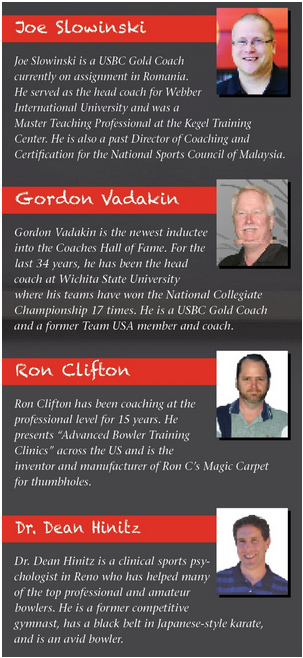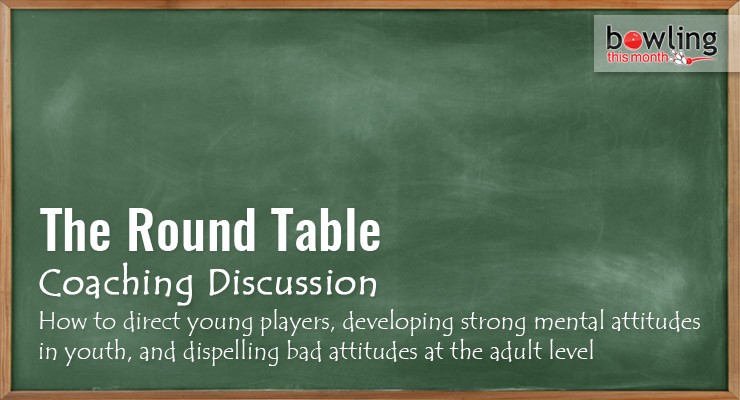Article Contents
- 1. I am a volunteer coach at my son’s junior league as well as with his high school...
- 1.1. Joe Slowinski
- 1.2. Gordon Vadakin
- 1.3. Ron Clifton
- 1.4. Dr. Dean Hinitz
- 2. I think that my physical game is pretty good but I hardly ever have good results...
- 2.1. Joe Slowinski
- 2.2. Gordon Vadakin
- 2.3. Ron Clifton
- 2.4. Dr. Dean Hinitz
Note: This article is only available to Bowling This Month subscribers.
This month, our panel of expert coaches discuss two very important aspects of our sport. Our first topic addresses the future of bowling, youth bowlers, and how we can help them improve and enjoy the sport as much as we do. Our second topic this month deals with what is, in my opinion, the too often overlooked mental part of our game and how we can make it stronger.
Editor’s note: The format of The Round Table column consists of posing technical questions submitted by readers to several top bowling coaches and educators and having them respond in “round-robin” style.

This month’s panel
I am a volunteer coach at my son’s junior league as well as with his high school team. In your opinion, what are the most important things that I can help teach young kids about bowling so they can bowl better and keep improving?
Joe Slowinski
With many scholarship dollars available for youth bowlers, including hundreds of collegiate bowling scholarships, I would strongly recommend fostering a disciplined approach to training as well as facilitating frequent exposure to sport bowling conditions as a catalyst for improvement.
Specifically, players must learn how to train in order to improve. With structured training, you will facilitate the most improvement. A simple daily structure could include seven components: (1) pre-practice meeting; (2) a dynamic warm-up; (3) physical game drills; (4) knowledge topic presentation; (5) on-lane skill building activities aligned with the clinic topic; (6) cool-down stretching and (7) post-practice journal and sharing.
A dynamic warm-up helps to build team culture while simultaneously preventing injury and preparing the body for an excellent practice session. Physical game drills are a holistic way to modify biomechanical movements. Clinic topics educate players about important concepts. Topics can include lining up on a fresh pattern, dealing with lane transition, changing ball speeds, altering axis of rotation, etc.
Each week should build on the previous week and players should be formally assessed for comprehension over time. After formally presenting the topic for the week, an on lane activity would help to build skills and reinforce knowledge. The clinic topic and on lane activities should include team concepts several times per week.
After practice, players should stretch collectively. After the cool down, players can do a reflection task after each session. What three things did you do well today? What did you learn today and how can it help you in competition? How was your group’s observation and communication? In the spirit of team building, the bowlers would share their response with ...
Already a premium member? Click here to log in.


